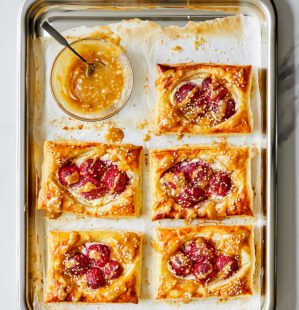It’s the ‘hob-toppers’ that get all the attention in the kitchen – saucepans, casseroles, griddles – but don’t forget about those tins and dishes that go in the oven. You might think one baking tray is no different to the next, but the material they’re made from makes a huge difference to how they interact with the food sitting in or on them. If you’ve ever made a dish that’s burnt on the outside and undercooked in the middle, been left with a pastry case that’s soggy on the bottom or had something fuse itself to the tin as it cooks, chances are (provided the recipe is solid and you followed it correctly) you’re using the wrong sort of bakeware.
When exposed to heat, glass, ceramic and metal all react in a different way, meaning they cook your food at differing speeds, intensity and evenness. Get to know the basic properties for each and you’ll know which one to pick for your next bake. , £7; , £24; , from £11; , £20; , £10; all from .

Metal is king when it comes to heat conduction, which is why the majority of bakeware is made from it (and most recipes are written with metal in mind). It’s durable, long-lasting and can even (usually) go on the hob if you need to kickstart some roast veg or finish off reducing roasting juices into a sauce. The high-speed heating quality of metal is ideal for pastries and doughs that need to crisp up on the base (see recipe, below), but it can scorch liquid-heavy dishes before the centre is fully cooked.
When usi.























